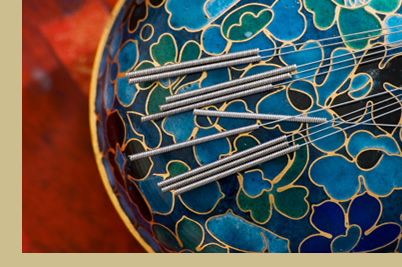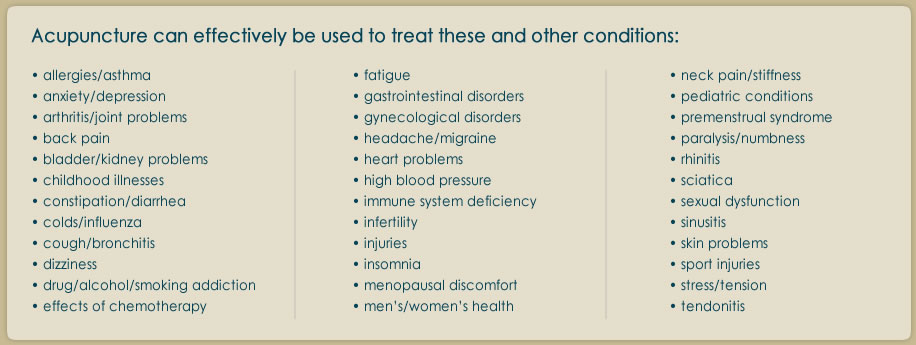
Acupuncture
 Acupuncture is one of the oldest, most commonly used systems of healing in the world. Originating in China some 3,500 years ago, only in the last three decades has it become popular in the United States.
Acupuncture is one of the oldest, most commonly used systems of healing in the world. Originating in China some 3,500 years ago, only in the last three decades has it become popular in the United States.
The United States, over the last few years, as well as mainstream healthcare, have begun to recognize Acupuncture as a primary health care profession. Acupuncture helps alleviate or eliminate pain, and strengthens physical, emotional, and physiological conditions by treating the underlying cause of these symptoms.
Acupuncture is a medical art based on over three thousand years of clinical experience. It is a traditional Chinese medical technique for unblocking Chi, or Qi (pronounced chee) by inserting needles at specific points on the body to balance the opposing forces of yin and yang. According to Chinese medicine, chi is the energy force that permeates everything and it flows through the human body along fourteen main pathways called meridians, which are related to the organs and musculoskeletal systems. When yin and yang are in harmony, chi flows freely, maintaining health and positive emotions. When a person is sick, diseased, or injured, there is obstruction of chi within the meridians..
The ultra-thin needles are inserted just under the skin, stimulating the meridians specific to a person's ailments, releasing chi and restoring the body's balance, relieving pain and other symptoms. Unlike hypodermic needles, acupuncture needles are solid and hair-thin, and they are not designed to cut the skin. They are also inserted to much more shallow levels than hypodermic needles, generally no more than a half-inch to an inch depending on the type of treatment being delivered. While each person experiences acupuncture differently, most people feel only a minimal amount of pain as the needles are inserted. Some people reportedly feel a sensation of excitement, while others feel relaxed.


